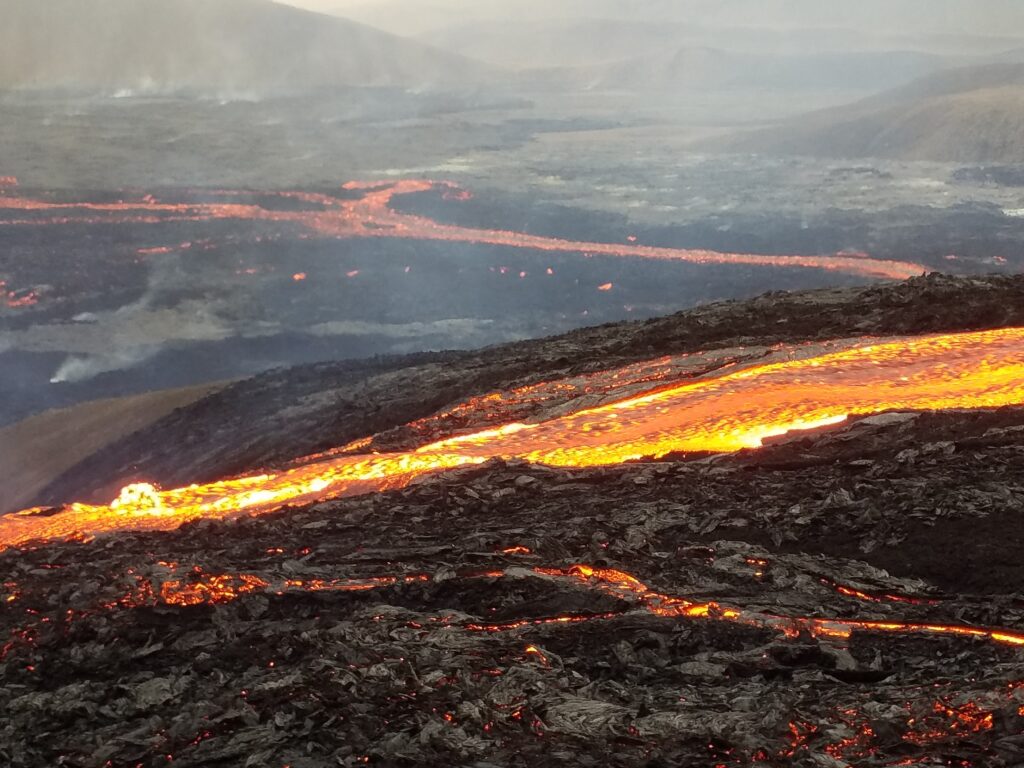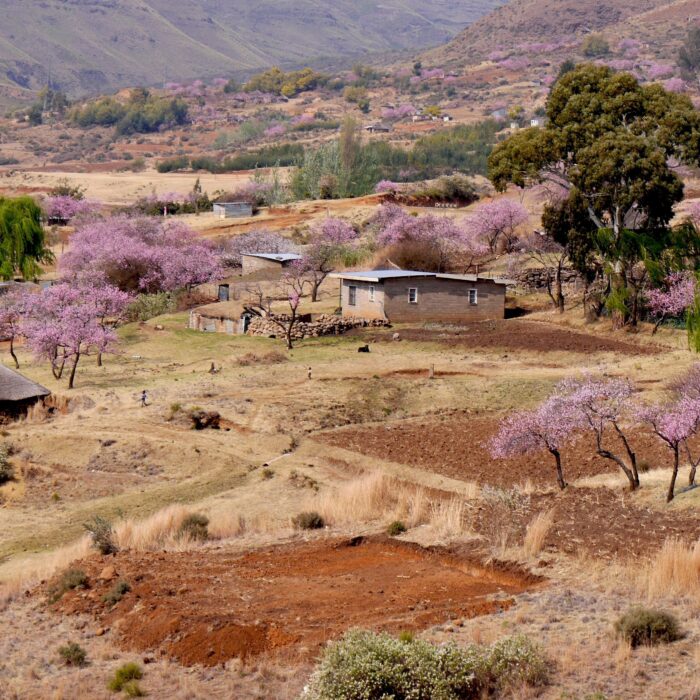Quick facts about Iceland:
- Population: Approximately 382,000 people.
- Capital: Reykjavik.
- Official Language: Icelandic.
- Currency: Icelandic Króna (ISK).
- Government: Unitary parliamentary republic.
- Major Religion: Christianity, primarily Lutheran.
- Geography: Located in the North Atlantic Ocean, Iceland is the westernmost country of Europe, known for its stunning landscapes, including glaciers, geysers, hot springs, and volcanoes.
Fact 1: Volcanoes are active in Iceland
The island sits atop the Mid-Atlantic Ridge, a tectonic boundary where the North American and Eurasian Plates diverge, resulting in significant geological activity.
Iceland’s volcanic activity is characterized by both effusive eruptions, where lava flows steadily from volcanic vents, and explosive eruptions, which can produce ash plumes and pyroclastic flows. Some of the most famous volcanoes in Iceland include Eyjafjallajökull, which erupted in 2010 and disrupted air travel across Europe, and Hekla, one of the country’s most active volcanoes.

Fact 2: Iceland has many geysers and hot springs
Iceland is renowned for its abundance of geysers, hot springs, and geothermal features, which are not only popular tourist attractions but also play a significant role in domestic life.
Iceland’s geysers, such as the famous Geysir and Strokkur, periodically erupt with hot water and steam, providing spectacular natural displays. Hot springs, both natural and man-made, are also common throughout the country and are often used for recreational purposes such as bathing and swimming.
Moreover, Iceland harnesses geothermal energy for domestic heating and electricity production, utilizing the heat from underground reservoirs to power homes, businesses, and greenhouse agriculture. This reliance on geothermal energy has helped Iceland reduce its dependence on fossil fuels and transition to more sustainable energy sources.
Fact 3: Iceland is known for its black sand beaches
These beaches are distinctive for their striking contrast between the black sand, often composed of fine particles of volcanic minerals, and the surrounding rugged coastline.
Some of the most famous black sand beaches in Iceland include Reynisfjara Beach near the village of Vík í Mýrdal, which is renowned for its dramatic basalt columns and towering sea stacks, as well as Djúpalónssandur Beach on the Snæfellsnes Peninsula, known for its hauntingly beautiful landscape and historic shipwreck remnants.
Note: Many people choose to rent a car to travel around Iceland, check here if you need an International Driver’s License to do so.

Fact 4: It’s windy in Iceland, and there are many definitions for wind in Icelandic
The island’s exposure to the North Atlantic Ocean and its position along the polar front contribute to the prevalence of strong winds, which can vary in intensity depending on the region and weather patterns.
In Icelandic, there are many definitions and terms for wind to describe its different characteristics and effects. For example, the word “blástur” generally refers to wind or a gust of wind, while “stormur” specifically denotes a strong wind or storm. Additionally, Icelandic also has terms to describe the direction and quality of the wind, such as “sæland” for a favorable wind coming from the sea and “landlægur” for a wind blowing from the land.
Fact 5: Iceland has glaciers
Iceland is home to numerous glaciers, which cover approximately 11% of the country’s land area. These glaciers are remnants of the last Ice Age and are characterized by vast expanses of ice, snow, and rugged terrain. Some of the largest glaciers in Iceland include Vatnajökull, which is the largest glacier in Europe by volume, Langjökull, and Hofsjökull.
Iceland’s glaciers are not only stunning natural features but also play a crucial role in shaping the country’s landscape and hydrology.

Fact 6: The Icelandic Parliament is one of the first in the world
The Icelandic Parliament, known as the Alþingi (Althing in English), is one of the oldest parliamentary institutions in the world. Established in 930 AD at Þingvellir (Thingvellir) in southwest Iceland, the Althing is regarded as the world’s first national parliament. It served as a gathering place for Icelandic chieftains and representatives to discuss laws, settle disputes, and make decisions for the Icelandic Commonwealth.
The establishment of the Althing marked a significant milestone in the history of governance and democracy, as it provided a forum for democratic debate and decision-making in early medieval Iceland.
Fact 7: In Iceland, you can see northern seeding for several months of the year
In Iceland, the Northern Lights, also known as the Aurora Borealis, can indeed be seen for several months of the year, particularly during the winter months when the nights are long and dark. The optimal viewing season for the Northern Lights in Iceland typically extends from late September to early April, with the peak months being October to March.
During this period, Iceland’s high latitude and location near the Arctic Circle provide ideal conditions for observing the Aurora Borealis. The natural phenomenon occurs when charged particles from the sun interact with the Earth’s magnetic field, creating colorful displays of light in the night sky.

Fact 8: Beer has been banned in Iceland for a long time
Beer was prohibited in Iceland for most of the 20th century, starting in 1915 with the enactment of Prohibition laws that prohibited all alcoholic beverages with an alcohol content above 2.25%. This ban on beer continued until March 1, 1989, when the Icelandic Parliament lifted the prohibition on beer with an alcohol content of up to 2.25%, effectively legalizing low-alcohol beer. Finally, on March 1, 1992, the ban on beer was fully lifted, allowing the sale and consumption of all alcoholic beverages, including beer, without restriction.
Fact 9: Iceland has thousands of waterfalls
Iceland is renowned for its abundance of waterfalls, with thousands of cascades scattered across the country’s diverse landscapes. These waterfalls are fed by Iceland’s numerous rivers, glaciers, and melting ice caps, creating stunning natural attractions that draw visitors from around the world.
Some of the most famous waterfalls in Iceland include Gullfoss, Seljalandsfoss, Skógafoss, and Dettifoss, each with its own unique characteristics and beauty. From towering plunges to graceful veils of water, Iceland’s waterfalls come in a variety of shapes and sizes, offering endless opportunities for exploration and photography.

Fact 10: Icelanders check their parentage before dating
In recent years, there has been a growing trend in Iceland towards using genealogical databases and online tools to check familial connections, especially before entering into serious relationships. This practice, known colloquially as “ÍslendingaApp” or the “Icelandic app for checking if you’re related,” gained attention internationally for its unique approach to addressing the potential for accidental incest in a small population.

Published April 28, 2024 • 6m to read





